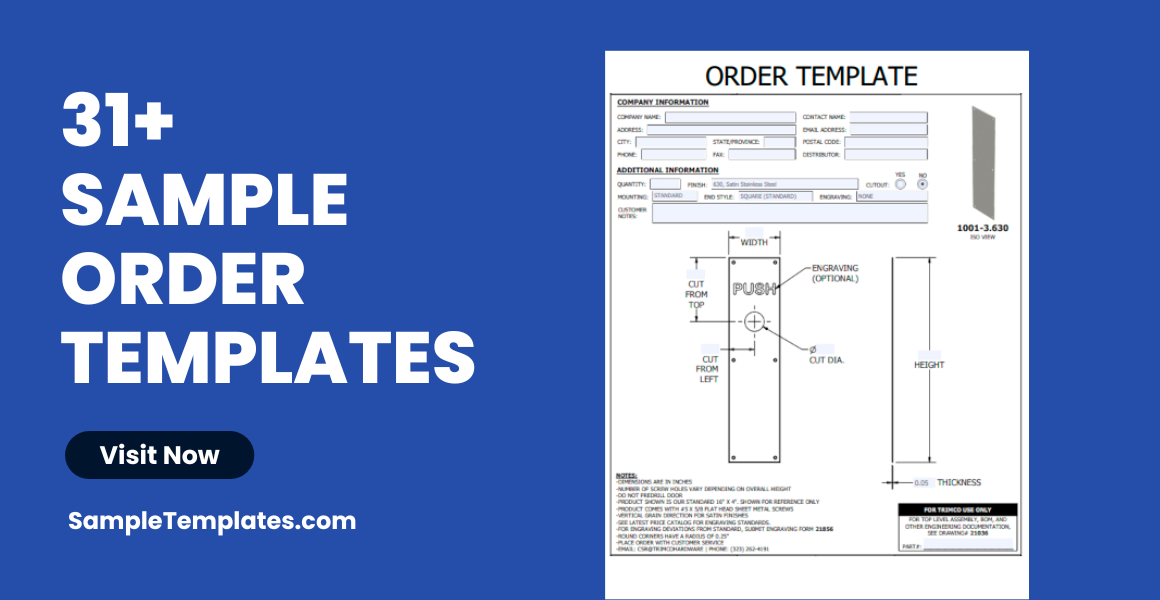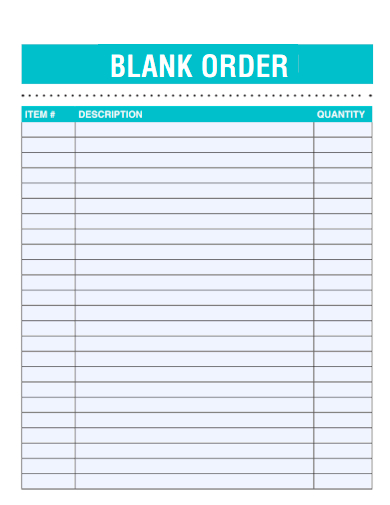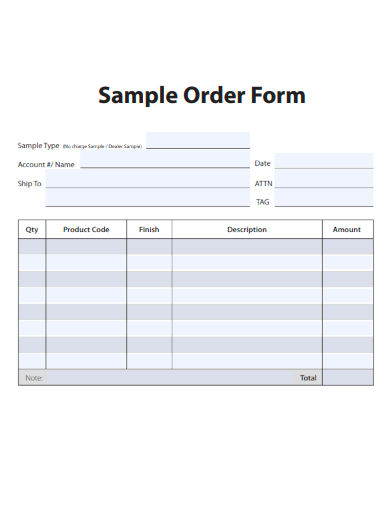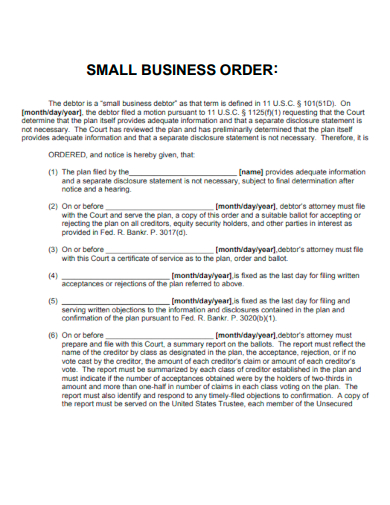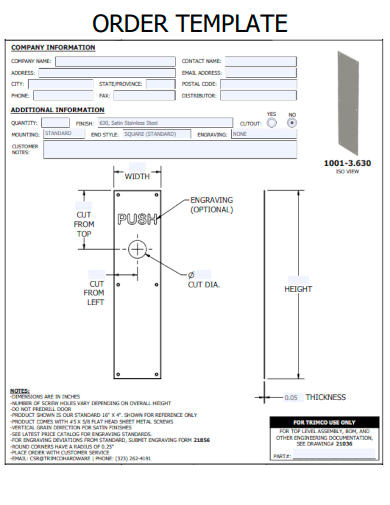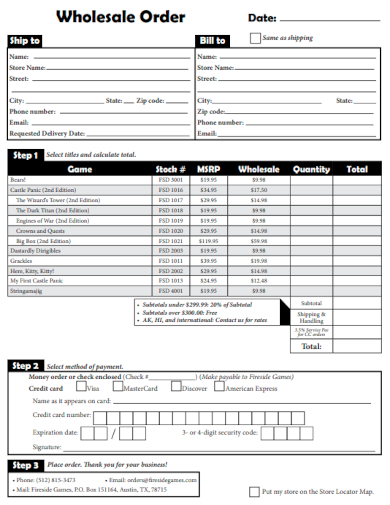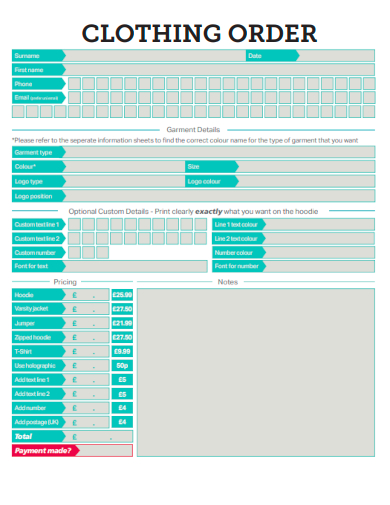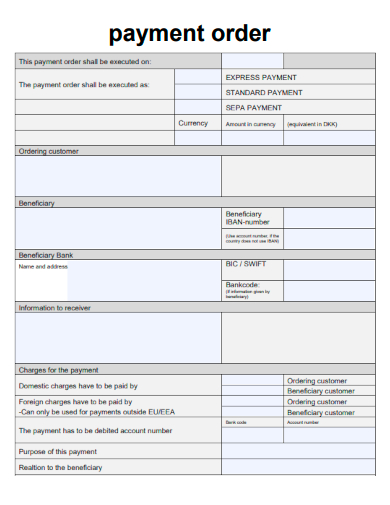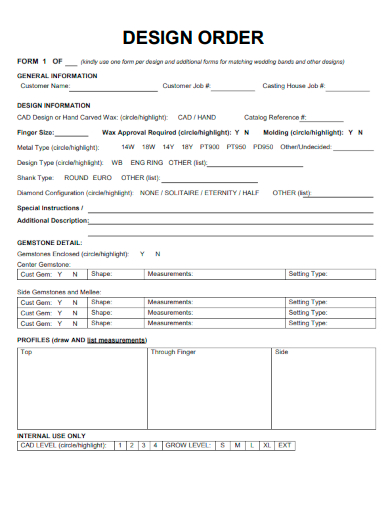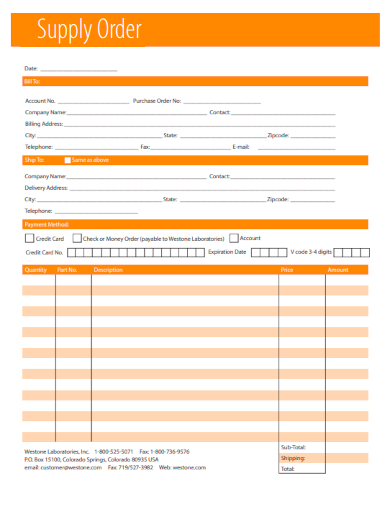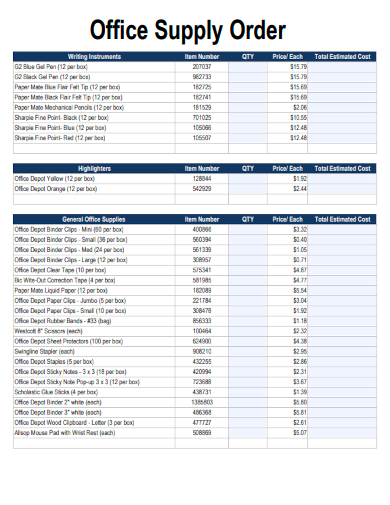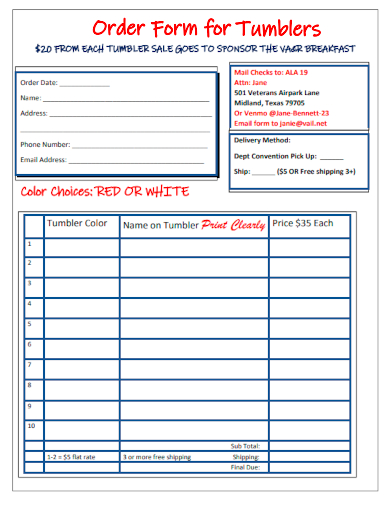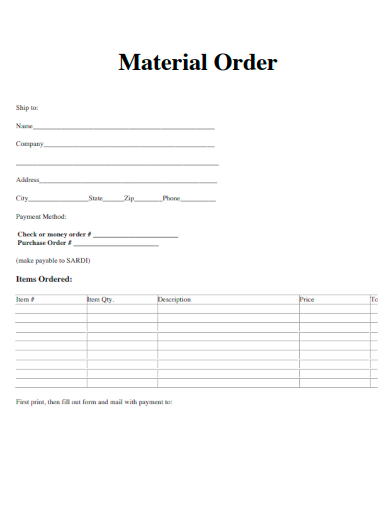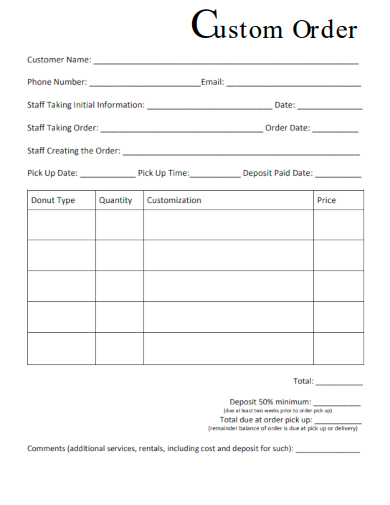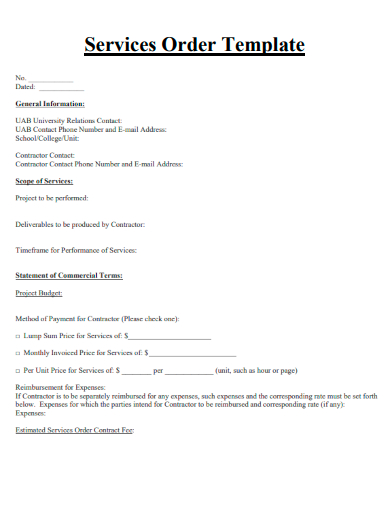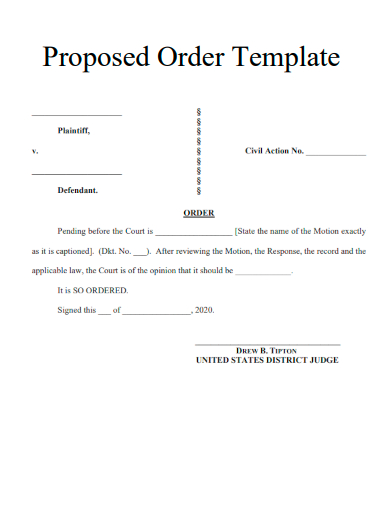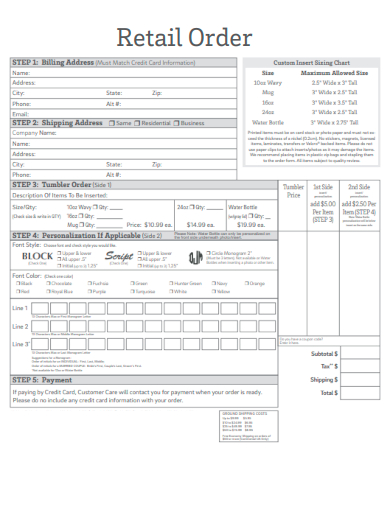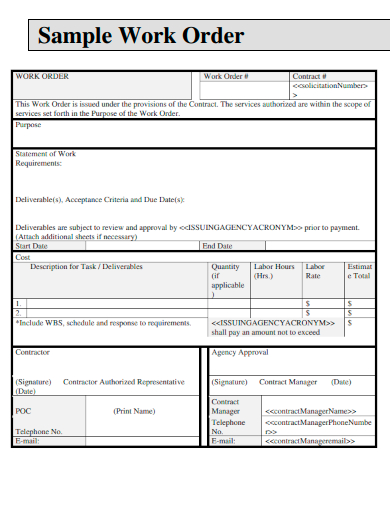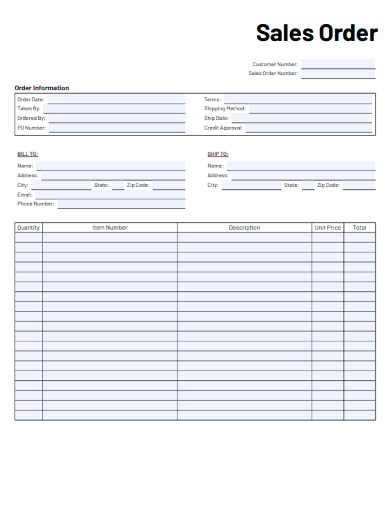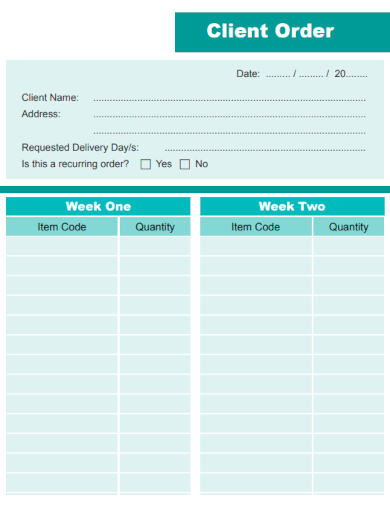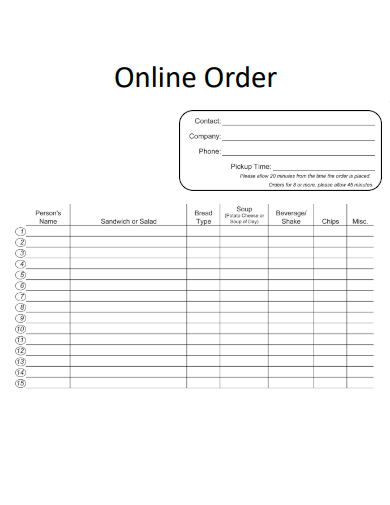Our Sample Order Template is a game-changer for businesses seeking streamlined and efficient ordering processes. With this user-friendly template, you can easily request, track, and manage sample purchase orders with precision and ease. Designed to enhance your sample workflow, it ensures error-free communication between your team and suppliers. Say goodbye to tedious paperwork and hello to a seamless ordering experience. Take the first step towards optimizing your operations and boosting productivity – try our Sample Order Template today and witness the transformation for yourself.
FREE 31+ Order Samples
1. Sample Fundraiser Order Template
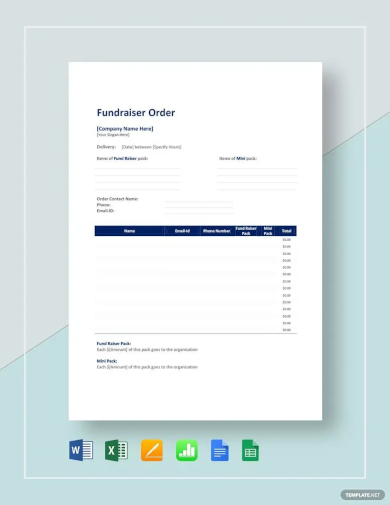
2. Sample Cake Order Template
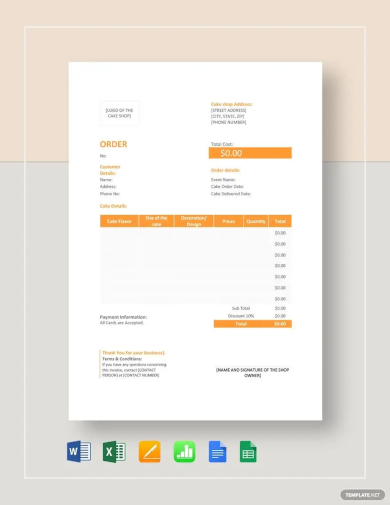
3. Sample Purchase Order Template
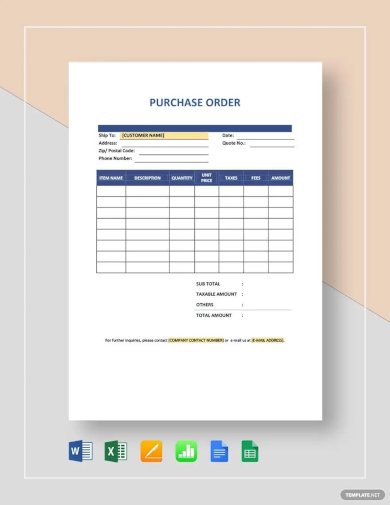
4. Sample Bakery Order Template

5. Sample T-Shirt Order Template
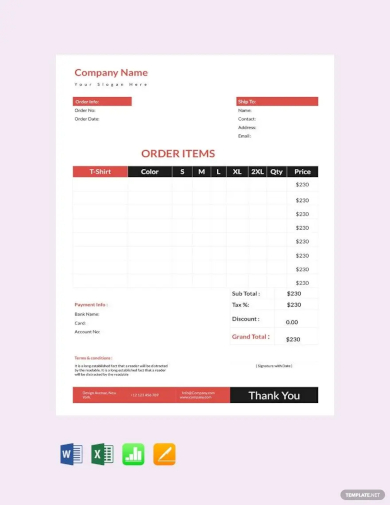
What Is an Order Template?
An order template is a structured document or digital form that simplifies and standardizes the process of creating and submitting orders for products or services. It serves as a foundational framework, providing a predefined structure and placeholders for essential order-related information, such as product details, quantities, pricing, shipping instructions, and payment terms. The primary purpose of an order template is to streamline and facilitate the ordering process for businesses, making it more efficient, consistent, and error-free.
Here are some key aspects and benefits of using order templates:
Efficiency: Order templates significantly improve the efficiency of order creation. Instead of starting from scratch each time an order is needed, employees can simply fill in the relevant details within the template. This not only saves time but also reduces the likelihood of errors.
Consistency: Standardization is a crucial advantage of order templates. By providing a consistent format and structure, templates ensure that all orders submitted by different employees or departments within a company adhere to the same guidelines. This consistency helps maintain clarity and professionalism in business transactions.
Clarity and Completeness: Order templates typically include fields or sections for all essential order information. This ensures that critical details, such as product specifications, quantities, delivery addresses, and payment terms, are not overlooked. This, in turn, reduces the potential for misunderstandings or disputes between buyers and sellers.
Customization: While order templates provide a standardized format, they are often customizable to meet the specific needs of different businesses or industries. This flexibility allows organizations to tailor their templates to match their unique requirements.
Error Reduction: Using order templates can significantly reduce the likelihood of errors in orders. Since the template prompts users to input specific details in designated fields, it minimizes the chances of missing or incorrect information. This is particularly important in industries where precision and accuracy in orders are paramount.
Streamlined Communication: Order templates enhance communication between buyers and sellers. They serve as a structured medium through which necessary information is conveyed, making it easier for both parties to understand and fulfill the order requirements. This can lead to smoother transactions and improved customer satisfaction.
Automation Integration: In modern business environments, order templates can be integrated with automation tools and software systems. This integration allows for seamless order processing, including automatic calculations of totals, inventory updates, and electronic submission to suppliers or fulfillment centers.
Cost Savings: Efficient order management can result in cost savings. By reducing the time and effort required to create and process orders, businesses can allocate resources more effectively and focus on other critical aspects of their operations.
In summary, an order template is a valuable tool for businesses of all sizes and across various industries. It simplifies the often complex process of ordering products or services, promoting efficiency, consistency, and clarity in business transactions. Whether used in traditional paper sample -based formats or integrated into digital systems, order templates play a crucial role in enhancing operational effectiveness and customer satisfaction.
6. Sample Blank Order Template
7. Sample Order Form Template
8. Sample Small Business Order Template
9. Sample Editable Order Template
10. Sample Wholesale Order Template
11. Sample Clothing Order Template
12. Sample Payment Order Template
13. Sample Design Order Template
14. Sample Food Order Template
15. Sample Supply Order Template
16. Sample Generic Order Template
17. Sample Photography Order Template
How do you create a free order template?
Creating a free order template is a relatively straightforward process, and there are various tools and methods you can use to do so. Here’s a step-by-step guide to help you create a free order template:
Define Your Requirements:
Before you start creating your order template, it’s essential to understand your specific needs. Consider the type of products or services you’ll be ordering, the information required, and any unique details that are specific to your business or industry.
Choose a Tool:
There are several tools and software options available for creating order templates, ranging from word processing software to spreadsheet applications. Some common choices include Microsoft Word, Microsoft Excel, Google Docs, and Google Sheets. These tools offer pre-designed templates that you can customize.
Select a Template:
Most word processing and spreadsheet software come with pre-designed templates that you can use as a starting point. Look for templates labeled as “Order Form” or “Purchase Order” and select one that closely matches your needs. This will save you time and effort in creating the basic structure.
Customize the Template:
Once you’ve chosen a template, start customizing it to meet your specific requirements. Modify the headers, labels, and fields to include the information that is relevant to your orders. Common fields include product name, description, quantity, price, total, shipping information, and payment details.
Add Company Branding:
To make the template more professional and align it with your brand, consider adding your company logo, name, and contact information. This branding helps create a consistent and recognizable order document.
Include Terms and Conditions:
Depending on the nature of your business, you may want to include terms and conditions on your order template. This can include information about payment terms, return policies, and other relevant terms that both parties should be aware of.
Test the Template:
Before deploying the template for regular use, test it with a sample order to ensure that all the fields and calculations work correctly. Make any necessary adjustments or corrections.
Save the Template:
Save the template to a location where it can be easily accessed by your team. You might want to create a folder specifically for templates to keep them organized.
Distribute the Template:
Share the template with relevant team members who will be responsible for creating and submitting orders. Provide clear instructions on how to use the template effectively.
Train Your Team:
Ensure that your team understands how to use the template correctly. Provide training if necessary to ensure that everyone is familiar with the process.
Periodic Updates:
As your business evolves or your order process changes, update the template accordingly. Regularly review and improve the template to ensure it remains effective and efficient.
Creating a free order template doesn’t have to be complicated. By following these steps and customizing a pre-designed template to suit your specific needs, you can have a functional order template that streamlines your ordering process and helps maintain consistency and accuracy in your business transactions.
18. Sample Order Request Template
19. Sample Office Supply Order Template
20. Sample Order Form for Tumblers Template
21. Sample Material Order Template
22. Sample Order Physician Template
23. Sample Custom Order Template
Different Types of Order Templates?
Order templates come in various forms to accommodate the diverse needs of businesses across different industries. These templates serve as standardized documents or digital forms that streamline the ordering process for specific products or services. Below, I’ll outline some of the different types of order templates:
Purchase Order Template:
A purchase order template is one of the most common types. It is used by businesses to request products or services from suppliers or vendors. It typically includes details such as the item or service being ordered, quantity, price, payment terms, shipping information, and a unique purchase order number.
Sales Order Template:
Sales order templates are used by businesses when they receive orders from customers. These templates capture details about the products or services ordered, quantities, pricing, customer information, and delivery instructions. They help ensure a smooth order-to-cash process.
Work Order Template:
Work order templates are commonly used in service-based industries like maintenance, repair, and construction. They specify the tasks to be performed, materials required, labor costs, and other relevant details to guide technicians or contractors in completing a job.
Service Order Template:
Service order templates are tailored to businesses offering services rather than physical products. They include information such as the type of service requested, service description, service provider details, scheduling, and billing information.
Job Order Template:
Job order templates are often used in manufacturing or production settings. They outline the details of a specific job or project, including materials needed, labor hours, machine use, and scheduling to ensure efficient project management.
Repair Order Template:
Repair order templates are essential for repair shops and maintenance businesses. They document the issue or damage, required repairs, parts needed, labor costs, and customer information.
Delivery Order Template:
Delivery order templates are used by logistics and shipping companies to confirm the dispatch and delivery of goods. They include information about the sender, recipient, shipment details, and a tracking or delivery confirmation number.
Custom Order Form:
Custom order forms are versatile templates that can be tailored to the unique requirements of a business. They can encompass various fields such as product customization options, special requests, and pricing calculations.
Subscription Order Template:
Subscription businesses use these templates to manage recurring orders. They typically include customer information, subscription details, billing information, and terms and conditions for the subscription service.
Food Order Template:
Restaurants and catering services often use food order templates to record customer orders for dine-in, takeout, or catering. These templates may include menu items, special requests, quantities, and pricing.
Event Order Template:
Event planners and venues use event order templates to detail the requirements for an event, including room setups, catering, audio-visual equipment, and scheduling.
Inventory Requisition Template:
Inventory requisition templates are used internally within organizations to request specific quantities of inventory or supplies from a central inventory department. These templates help maintain inventory control.
Online Order Form:
In the digital age, online order forms have become prevalent for e-commerce businesses. These web-based forms allow customers to select products, provide shipping and payment details, and place orders online.
These are just a few examples of the different types of order templates that businesses can use to streamline their operations. The choice of template depends on the specific needs of the business and the industry in which it operates. Customization options also allow companies to adapt these templates to their unique requirements.
24. Sample Services Order Template
25. Sample Proposed Order Template
26. Sample Journal Order Templates
27. Sample Retail Order Template
28. Sample Work Order Template
29. Sample Change Order Template
30. Sample Sales Order Template
31. Sample Client Order Template
32. Sample Online Order Template
What are the Benefits of Order templates?
Order templates offer numerous benefits to businesses, regardless of their size or industry. These standardized documents or digital forms streamline the ordering process and contribute to improved efficiency, accuracy, and consistency. Below are the key advantages of using order templates:
Efficiency: Order templates significantly expedite the sample order creation process. Instead of starting from scratch with each order, employees can simply fill in the required information in a template. This saves time and reduces the workload for staff involved in placing orders.
Consistency: Order templates enforce consistency in the ordering process. They provide a standardized format and structure, ensuring that all orders adhere to the same guidelines. This consistency helps maintain professionalism and reduces the likelihood of errors or omissions.
Clarity and Completeness: Templates typically include fields for all necessary order information, leaving no room for missing or incomplete details. This ensures that vital information, such as product specifications, quantities, delivery addresses, and payment terms, is consistently included, reducing the potential for misunderstandings.
Error Reduction: By guiding users to input specific details in designated fields, order templates minimize the risk of errors. This is particularly crucial in industries where precision and accuracy are paramount, as it can help prevent costly mistakes.
Streamlined Communication: Order templates enhance communication between buyers and sellers. They serve as a structured medium through which essential information is conveyed, making it easier for both parties to understand and fulfill order requirements. This can lead to smoother transactions and improved customer satisfaction.
Automation Integration: Modern businesses can integrate order templates with automation tools and software systems. This integration allows for seamless order processing, including automatic calculations of totals, inventory updates, and electronic submission to suppliers or fulfillment centers. Automation reduces manual data entry and the associated risk of errors.
Cost Savings: Efficient order management can lead to cost savings. By reducing the time and effort required to create and process orders, businesses can allocate resources more effectively and focus on other critical aspects of their operations.
Customization: Order templates are often customizable to meet the unique needs of businesses or industries. This flexibility allows organizations to tailor templates to match their specific requirements, ensuring that they capture all relevant information.
Professionalism: Well-designed order templates project a professional image to suppliers, customers, and partners. They convey an organized and efficient approach to business transactions, which can enhance a company’s reputation.
Documentation and Record-Keeping: Order templates provide a structured means of documenting orders. This documentation is valuable for record-keeping, tracking orders, and resolving any disputes or discrepancies that may arise in the future.
Scalability: As businesses grow, the volume of orders can increase significantly. Order templates are scalable, accommodating larger quantities of orders without sacrificing efficiency or accuracy.
Reduced Training Time: New employees can quickly become familiar with the order process when standardized templates are in place. This reduces the training time required for them to effectively create and manage orders.
In summary, order templates are essential tools for optimizing the order management process in businesses. They enhance efficiency, reduce errors, improve communication, and contribute to overall cost savings. By providing a standardized framework, these templates help businesses maintain consistency, professionalism, and clarity in their order-related transactions, which ultimately benefits both the organization and its customers.
Related Posts
FREE 11+ Purchase Order Samples & Templates in Google Docs ...
FREE 9+ Sample Food Order Forms in MS Word PDF
FREE 9+ Sample Orders to Appear in PDF
FREE 9+ Sample Food Order Forms in MS Word PDF
FREE 3+ Purchase Order Cancellation Letter Samples and ...
FREE 17+ Sample Food Order Templates in PDF MS Word | MS ...
FREE 12+ T shirt Order Form Samples in MS Word PDF
FREE 10+ Supply Order Samples in MS Word MS Excel | Google ...
FREE 20+ Order Form Templates in PDF MS Word | Excel
FREE 6+ Sample Sales Order in Excel PDF
FREE 10+ Sample Order Forms in PDF MS Word
FREE 9+ Sales Order Confirmation Samples in PDF
FREE 16+ Sample Cake Order Form Templates in MS Word PDF
FREE 10+ Sample Paper Order Forms in MS Word PDF
FREE 18+ Work Order Samples in PDF MS Word | Excel | Apple ...
